Sparaxis - garden hybrid
| Botanical Name | Sparaxis - garden hybrid |
|||||||||||
| Family | Iridaceae - The iris family. |
|||||||||||
| Pronunciation | IKS-ee-uh |
|||||||||||
| Common Name(s) |
English: Harlequin Flower; Wandflower
|
|||||||||||
| Plant Group |
|
|||||||||||
| Plant Size |
|
|||||||||||
| Position |
|
|||||||||||
| General Information |
|
|||||||||||
| Specific Information | Sparaxis are small, perennial corms that are often grown as annuals, more so by overseas gardeners. They originate from a wet winter rainfall habitat, growing in winter, flowering in spring and remaining dormant underground during the dry summer season. The variety of colours and individuality of patterns on their conspicuous flowers are truly exceptional. They are tough and can be left in the soil but are reportedly at their best in a container, where their water and dormancy period can be properly monitored. The specimens shown in the photos were lifted from a patch of lawn where they had been mown down for years and rarely reached a height of 10cm. It did not take them long to recover from this abuse and they have flowered and seeded freely for the past two years. If planted in a shady area, make sure they get a few hours of direct sun daily or flowering will be compromised. |
|||||||||||
| Ad Break | ||||||||||||
| Flowers | ||||||||||||
| Description | trumpet shaped flowers on a spike |
|||||||||||
| Season |
|
|||||||||||
| Colour |
|
|||||||||||
| Growth Rate |
|
|||||||||||
| Plant Uses |
|
|||||||||||
| Distribution and Habitat | all members of this genus are found in the Western Cape Province of South Africa, in a Mediterranean climate |
|||||||||||
| Planting Suggestions | If used in the garden, plant the corms about 7 cm apart at a depth of about three times their height, in light, well-drained soil. Drainage can be improved with a gentle slope or the addition of compost and medium-grain sand. Water well fortnightly during winter and spring in order to keep the soil permanently moist. After blooming has finished for the season leave the foliage in place; don't cut it off. The leaves will gather sunlight to create food and strengthen the bulb for the following season. Late in the summer the leaves will yellow and die back as the plant slips into dormancy and foliage many be removed at this point. When the leaves die back, stop all watering. Preferably remove corms from the ground every second year during the dormant period. If left in the ground, ensure that they are kept dry and protected against overheating. In summer rainfall climates lift the corms and store them until planting time the following autumn. For pots mix two parts coarse river sand, one part loam and one part fine compost. Ensure good drainage by placing some bark or stones in the base of the container. Sterilize the soil by pour boiling water into the pots to kill off most of the weed seeds. Plant corms at a depth of about 3 cm. Store the pot in a cool dry spot during summer. |
|||||||||||
| Medicinal Uses | No data found. |
|||||||||||
| Ad Break | ||||||||||||


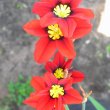
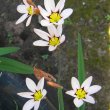
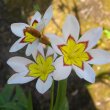

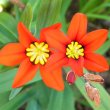
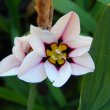
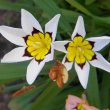


Comments
sparaxis
in 1997 at my house in pretoria i planted 241 bulbs of the most beautiful sparaxis and got soo many fantastic replies and they flowered sooooo amazing surely one of the most amazing bulbs from S.A !!!!!!! .
Hi Jack
Hi Jack
Thanks for your comment and I quite agree with you. The colour variations are amazing. There are few other bulbs with such variety.
Kind regards
Lorraine
This will be my first time
This will be my first time with Sparaxis. We have a lot of squirrels that dig up tulip bulbs - will they do the same with Sparaxis?
Do squirrels eat Sparaxis bulbs?
Hi Karen
I really have no idea. Perhaps a reader will be able to tell us.
Kind regards
Lorraine
Discuss this plant
Share knowledge, ask a question or give an experience.